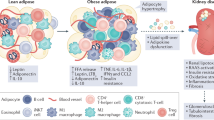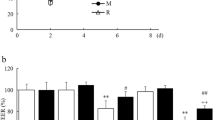Abstract
Many important biochemical mechanisms are activated in the presence of high levels of glucose, which occur in diabetes. Elevated levels of glucose accelerate the formation of advanced glycation end-products (AGEs). Via their chief signaling receptor—the AGE-specific receptor (commonly abbreviated as RAGE)—AGEs generate reactive oxygen species and activate inflammatory signaling cascades. Consequently, AGEs have key roles in the pathogenesis of diabetic complications. Two discoveries have advanced our knowledge of the roles of RAGE in inflammation. First, this receptor has multiple ligands and binds not only AGEs but also proinflammatory, calcium-binding S100 proteins (also known as calgranulins) and nuclear high mobility group protein box-1. Second, RAGE is expressed on T lymphocytes, monocytes and macrophages; RAGE expression on T lymphocytes is essential for effective priming of immune responses in vivo. In this Review, we chronicle roles for RAGE in the pathogenesis of diabetic complications and develop the hypothesis that, in addition to RAGE's central role in the inflammatory response, it is critically linked to the pathogenesis of types 1 and 2 diabetes.
Key Points
-
Elevated levels of glucose accelerate the formation of advanced glycation end-products (AGEs)
-
AGEs, via their chief signaling receptor—the AGE-specific receptor (RAGE)—generate reactive oxygen species, activate inflammatory signaling cascades and, consequently, have key roles in the pathogenesis of diabetic complications
-
RAGE is a multiligand receptor which, as well as AGEs, binds proinflammatory S100 proteins and high mobility group protein box-1
-
RAGE is also expressed on T lymphocytes, monocytes and macrophages; RAGE expression on T lymphocytes is essential for effective priming in vivo
-
Inflammatory mechanisms have critical roles in the pathogenesis of and complications associated with types 1 and 2 diabetes
-
Blockade of RAGE might provide a novel therapeutic target to suppress the complications of diabetes, and, in turn, mitigate injury triggered by the adaptive immune response
This is a preview of subscription content, access via your institution
Access options
Subscribe to this journal
Receive 12 print issues and online access
$209.00 per year
only $17.42 per issue
Buy this article
- Purchase on Springer Link
- Instant access to full article PDF
Prices may be subject to local taxes which are calculated during checkout

Similar content being viewed by others
References
Tamarat R et al. (2003) Blockade of advanced glycation end product formation restores ischemia-induced angiogenesis in diabetic mice. Proc Natl Acad Sci USA 100: 8555–8560
Nishikawa T et al. (2000) Normalizing mitochondrial superoxide production blocks three pathways of hyperglycaemic damage. Nature 404: 787–790
Gorin Y et al. (2005) Nox4 NAD(P)H oxidase mediates hypertrophy and fibronectin expression in the diabetic kidney. J Biol Chem 280: 39616–39626
Wei Y et al. (2007) NADPH oxidase contributes to vascular inflammation, insulin resistance, and remodeling I the transgenic (mRen2) rat. Hypertension 50: 384–391
Ding Y et al. (2007) Activation of RAGE induces elevated O2 − generation by mononuclear phagocytes in diabetes. J Leukoc Biol 81: 520–527
Wautier MP et al. (2001) Activation of NADPH oxidase by AGE links oxidant stress to altered gene expression via RAGE. Am J Physiol Endocrinol Metab 280: E685–E694
Brownlee M (1992) Glycation products and the pathogenesis of diabetic complications. Diabetes Care 15: 1835–1843
Schmidt AM et al. (1992) Isolation and characterization of two binding proteins for advanced glycosylation end products from bovine lung which are present on the endothelial cell surface. J Biol Chem 267: 14987–14997
Neeper M et al. (1992) Cloning and expression of a cell surface receptor for advanced glycosylation end products of proteins. J Biol Chem 267: 14998–15004
Brett J et al. (1994) Survey of the distribution of a newly characterized receptor for advanced glycation end products in tissues. Am J Pathol 143: 1699–1712
Taguchi A et al. (2000) Blockade of RAGE–amphoterin signalling suppresses tumour growth and metastases. Nature 405: 354–360
Park L et al. (1998) Suppression of accelerated diabetic atherosclerosis by the soluble receptor for advanced glycation endproducts. Nat Med 4: 1025–1031
Tanji N et al. (2000) Exp ression of advanced glycation end products and their cellular receptor RAGE in diabetic nephropathy and nondiabetic renal disease. J Am Soc Nephrol 11: 1656–1666
Schmidt AM et al. (1995) Advanced glycation endproducts interacting with their endothelial receptor induce expression of vascular cell adhesion molecule-1 (VCAM-1) in cultured human endothelial cells and in mice. A potential mechanism for the accelerated vasculopathy of diabetes. J Clin Invest 96: 1395–1403
Higashi T et al. (1997) The receptor for advanced glycation end products mediates the chemotaxis of rabbit smooth muscle cells. Diabetes 46: 463–472
Schmidt AM et al. (1993) Regulation of human mononuclear phagocyte migration by cell surface-binding proteins for advanced glycation end products. J Clin Invest 91: 2155–2168
Gu L et al. (2006) Role of receptor for advanced glycation end-products and signalling events in advanced glycation end-product-induced monocyte chemoattractant protein-1 expression in differentiated mouse podocytes. Nephrol Dial Transplant 21: 299–313
Harja E et al (2008) Vascular and inflammatory stresses mediate atherosclerosis via RAGE and its ligands in apoE−/− mice. J Clin Invest 118: 183–194
Donato R (2001) S100: a multigenic family of calcium-modulated proteins of the EF-hand type with intracellular and extracellular functional roles. Intl J Biochem Cell Biol 33: 637–668
Hofmann MA et al. (1999) RAGE mediates a novel proinflammatory axis: a central cell surface receptor for S100/calgranulin polypeptides. Cell 97: 889–901
Sorci G et al. (2003) S100B inhibits myogenic differentiation and myotube formation in a RAGE-independent manner. Mol Cell Biol 23: 4870–4881
Wang H et al. (1999) HMG-1 as a late mediator of endotoxin lethality in mice. Science 285: 248–251
Park JS et al. (2004) Involvement of Toll-like receptors 2 and 4 in cellular activation by high mobility group box 1 protein. J Biol Chem 279: 7370–7377
Chavakis T et al. (2003) The pattern recognition receptor (RAGE) is a counterreceptor for leukocyte integrins: a novel pathway for inflammatory cell recruitment. J Exp Med 198: 1507–1515
Yan SD et al. (1996) RAGE and amyloid-β peptide neurotoxicity in Alzheimer's disease. Nature 382: 685–691
Ma W et al. (2007) RAGE ligand upregulation of VEGF secretion in ARPE-19 cells. Invest Ophthalmol Vis Sci 48: 1355–1361
Herold K et al. (2007) Receptor for advanced glycation end products (RAGE) in a dash to the rescue: inflammatory signals gone awry in the primal response to stress. J Leukoc Biol 82: 204–212
Yamamoto Y et al. (2001) Development and prevention of advanced diabetic nephropathy in RAGE-overexpressing mice. J Clin Invest 108: 261–268
Wendt T et al. (2003) RAGE drives the development of glomerulosclerosis and implicates podocyte activation in the pathogenesis of diabetic nephropathy. Am J Pathol 162: 1123–1127
Myint KM et al. (2006) RAGE control of diabetic nephropathy in a mouse model: effects of RAGE gene disruption and administration of low-molecular weight heparin. Diabetes 55: 2510–2522
Oldfield MD et al. (2001) Advanced glycation end products cause epithelial–myofibroblast transdifferentiation via the receptor for advanced glycation end products (RAGE). J Clin Invest 108: 1853–1863
Kaji Y et al. (2007) Inhibition of diabetic leukostasis and blood-retinal barrier breakdown with a soluble form of the receptor for advanced glycation endproducts. Invest Ophthalmol Vis Sci 48: 858–865
Yamagishi S et al. (2005) Angiotensis II augments advanced glycation-endproduct induced pericyte apoptosis through RAGE overexression. FEBS Lett 579: 4265–4270
Barile GR et al. (2005) The RAGE axis in early diabetic retinopathy. Invest Ophthalmol Vis Sci 46: 2916–2924
Toth C et al. (2007) RAGE and experimental diabetic neuropathy. Diabetes [10.2337/db07-0339]
Bierhaus A et al. (2004) Loss of pain perception in diabetes is dependent on a receptor of the immunoglobulin superfamily. J Clin Invest 114: 1741–1751
Burke AP et al. (2004) Morphologic findings of coronary atherosclerotic plaques in diabetics: a postmortem study. Arterioscler Thromb Vasc Biol 24: 1266–1271
Bucciarelli LG et al. (2002) RAGE blockade stabilizes established atherosclerosis in diabetic apolipoprotein E null mice. Circulation 106: 2827–2835
Hotamisligil GS et al. (1993) Adipose expression of tumor necrosis factor-α: direct role in obesity-linked insulin resistance. Science 259: 87–91
Weisberg SP et al. (2003) Obesity is associated with macrophage accumulation in adipose tissue. J Clin Invest 112: 1796–1808
Moser B et al (2007) Blockade of RAGE suppresses alloimmune reactions in vitro and delays allograft rejection in murine heart transplantation. Am J Transplant 7: 293–302
Chen Y et al. (2004) Blockade of late stages of autoimmune diabetes by inhibition of the receptor for advanced glycation end products. J Immunol 173: 1399–1405
Moser B et al. (2007) Receptor for glycation end products expression on T cells contributes to antigen-specific cellular expansion in vivo . J Immunol 179: 8051–8058
Song F et al. (2007) RAGE regulates obesity and hyperglycemia induced by high-fat feeding in mice. Poster #1786 presented at the 67th Annual meeting of the American Diabetes Association: 2007 June 22–26, Chicago, IL
Unoki H et al. (2007) Advanced glycation endproducts attenuate cellular insulin sensitivity by increasing the generation of intracellular reactive oxygen species in adipocytes. Diabetes Res Clin Pract 76: 236–244
Berg TJ et al. (1997) Increased serum levels of advanced glycation end products (AGEs) in children and adolescents with IDDM. Diabetes Care 20: 1006–1008
Basta G et al. (2006) Circulating soluble receptor for advanced glycation end products is inversely associated with glycemic control and S100A12 protein. J Clin Endocrinol Metab 91: 4628–4634
ClinicalTrials.gov [http://www.clinicaltrials.gov./] (accessed 4 February 2008)
Matsui T et al. (2007) Telmisartan, an angiotensin II type 1 receptor blocker, inhibits advanced glycation endproduct (AGE)-induced monocyte chemoattractant protein-1 in mesangial cells through downregulation of receptor for AGEs via peroxisome proliferator activated receptor γ activation. J Int Med Res 35: 482–489
Cuccurullo C et al. (2006) Suppression of RAGE as a basis of simvastatin-dependent plaque stabilization in type 2 diabetes. Arterioscler Thromb Vasc Biol 26: 2716–2723
Geroldi D et al. (2006) Soluble receptor for advanced glycation end products: from disease marker to potential therapeutic target. Curr Med Chem 13: 1971–1978
Yamagishi S et al. (2007) Kinetics, role and therapeutic implications of endogenous soluble form of receptor for advanced glycation endproducts (sRAGE) in diabetes. Curr Drug Targets 8: 1138–1143
Acknowledgements
We gratefully acknowledge the Juvenile Diabetes Research Foundation and the United States Public Health Service for their support of this work. AM Schmidt is a recipient of a Juvenile Diabetes Research Foundation Scholar Award.
Author information
Authors and Affiliations
Corresponding author
Ethics declarations
Competing interests
Ann Marie Schmidt has declared that she is a consultant and receives grants/research support from Transtech Pharma. The other authors declared no competing interests.
Rights and permissions
About this article
Cite this article
Yan, S., Ramasamy, R. & Schmidt, A. Mechanisms of Disease: advanced glycation end-products and their receptor in inflammation and diabetes complications. Nat Rev Endocrinol 4, 285–293 (2008). https://doi.org/10.1038/ncpendmet0786
Received:
Accepted:
Published:
Issue Date:
DOI: https://doi.org/10.1038/ncpendmet0786
This article is cited by
-
Association between diabetes and cancer. Current mechanistic insights into the association and future challenges
Molecular and Cellular Biochemistry (2023)
-
The effects of metformin monotherapy and combination of metformin and glibenclamide therapy on the expression of RAGE, Sirt1, and Nrf2 genes in peripheral blood mononuclear cells of type 2 diabetic patients
Journal of Diabetes & Metabolic Disorders (2022)
-
Diet-Derived Advanced Glycation End Products (dAGEs) Induce Proinflammatory Cytokine Expression in Cardiac and Renal Tissues of Experimental Mice: Protective Effect of Curcumin
Cardiovascular Toxicology (2022)
-
Immunohistochemical study for the expression of leukocyte adhesion molecules, and FGF23 and ACE2 in P. gingivalis LPS-induced diabetic nephropathy
BMC Nephrology (2021)
-
The melibiose-derived glycation product mimics a unique epitope present in human and animal tissues
Scientific Reports (2021)



